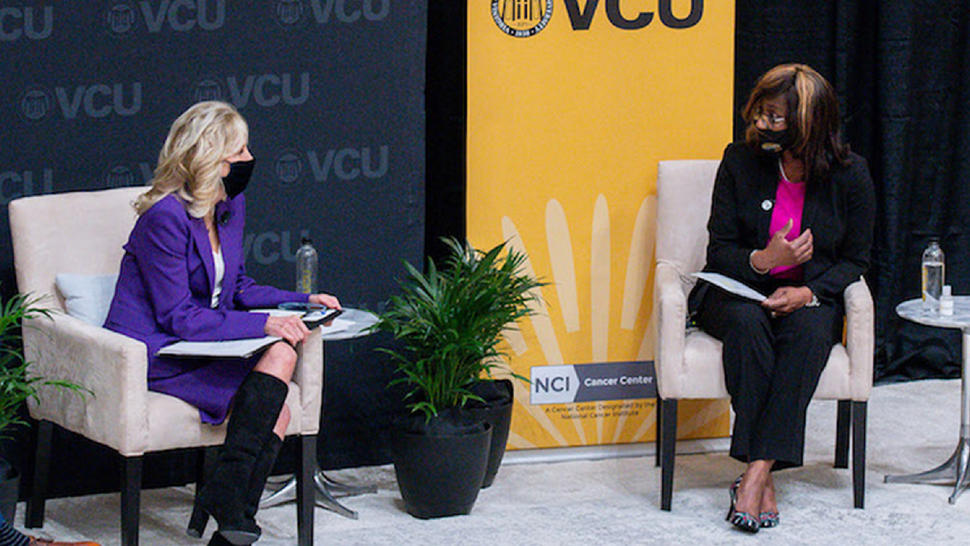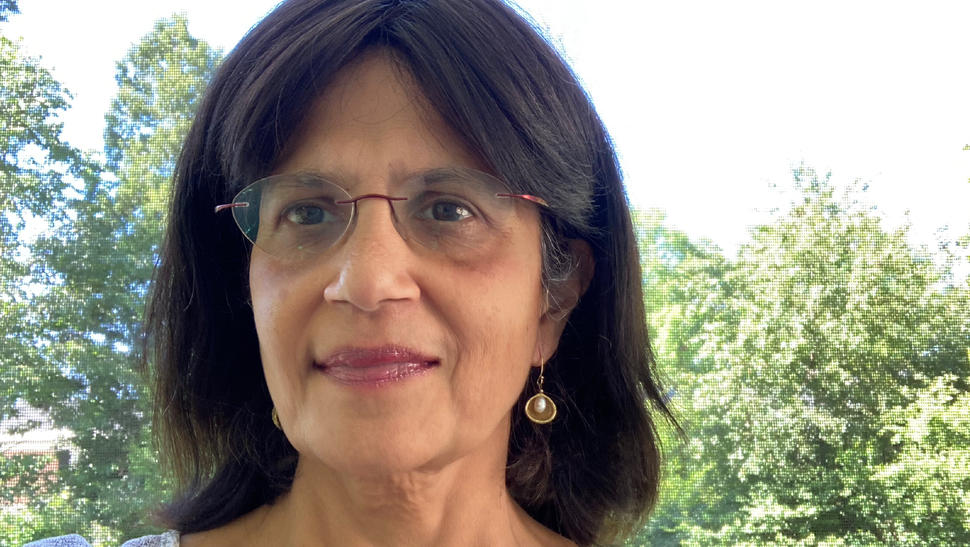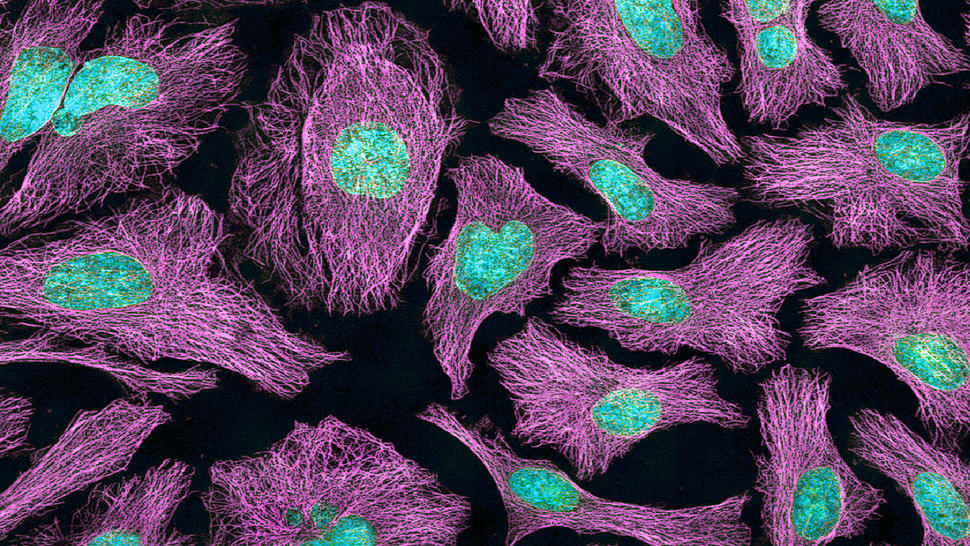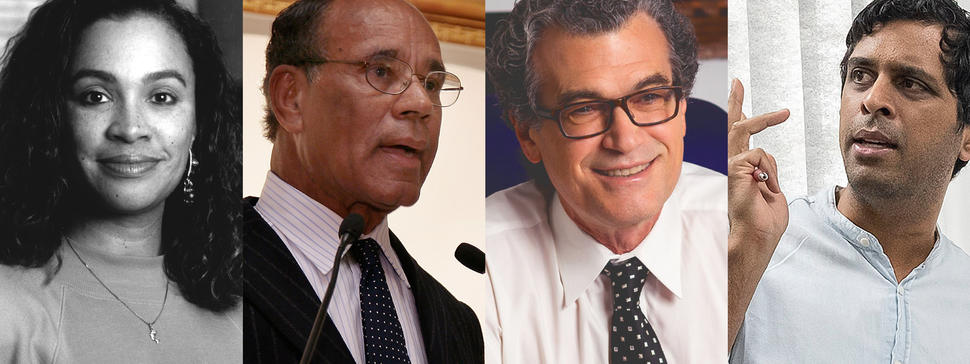Eliminating Cancer Health Disparities Takes All of Us
The 1960s saw a surge in activism to end widespread institutionalized racism, including in health care, where little was being done to study and address disparities. Since then, progress has been made in areas like inclusive cancer data collection, community outreach, and organizational change within medical institutions. But as is evident from current social justice movements and the COVID-19 pandemic, disparities still exist and remind us how much is left to do to build a truly equitable society.
Don’t Just Talk to Patients, Listen to Them!
“I know what it feels like to appear healthy and have health problems dismissed,” said breast health disparities researcher and cancer survivor Dr. Vanessa Sheppard. “We need to inform patients but also listen and trust that they know their bodies.”
Vanessa was diagnosed with Hodgkin lymphoma in college and battled it three more times. Throughout, she felt that "there was information I didn’t have access to.” Even years later, she was surprised to see Hodgkin lymphoma listed on a colleague’s slide as a risk factor for breast cancer. “I’m fairly educated, and my risk was not clear to me.” As a result of the radiation treatments in her youth, Vanessa would go on to be diagnosed with (and overcome) triple-negative breast cancer.
Vanessa’s deep commitment to making people feel heard is what drives her work as associate director of community outreach at VCU Massey Cancer Center. “As researchers, we can enhance our relationships in underserved communities if we embed community voices in what we do and participate in a dialogue,” she said. She added that having that dialogue with the Latina, African immigrant, and African-American women that the center sees could help increase breast cancer screenings and clinical trial participation in these communities. Through initiatives like partnering with a cohort of community champions, Vanessa is dispelling myths about breast cancer and clinical trial participation.
This year, she got to tell her story and discuss her work with Dr. Jill Biden during the First Lady’s visit to VCU Massey. “In that moment, I thought of the people close to me who didn’t have good outcomes,” she said. “I stand on the shoulders of those before me. I’m here, and I can pay it forward to other minority and underserved individuals.”
It Is Our Duty: Building Trust in Rural Communities
“I strongly believe in justice for all. My focus is to get the best prevention programs and cancer care to everyone. People depend on us to do the right thing by them. It is our duty,” said Dr. Shobha Srinivasan, senior advisor for health disparities at NCI.
But that doesn’t mean people living in the rural counties Shobha works with trust researchers. “We have not been there for these communities in their hour of need,” said Shobha. “In rural America, if the government isn't there and the health institutes aren't there, why should people engage with you? To build trust, you need to build relationships, starting with primary and secondary prevention." Many of these areas have high poverty rates and lack medical resources, meaning they have some of the greatest needs. Yet for every 3,500 patients, there’s just one doctor in counties where populations have higher average death rates for all cancers combined.
Being present might not fix everything, but it can start to build trust. And with trust comes the chance to improve outcomes for people in need. “The circle of mistrust causes many public health consequences—we saw this with COVID,” Shobha said. Distrust in federal health guidance, the spread of misinformation, and limited access to health care resources all contributed to the surge in COVID-19 cases and deaths in rural counties.
How can researchers build and sustain these relationships? Simple—listen. “Listening is at the root of [change],” she said. “Until you talk to a patient, and listen, you won’t understand the context of their lives.” Shobha is collaborating with community leaders as well as groups embedded in these areas. She’s seen progress already, but has big expectations for the future. “We must tailor interventions to, and understand the social context of, the community to ensure success. That is the future of where we want to go.”
Reducing Cancer Health Disparities: A Moral and Scientific Imperative
Henrietta Lacks was diagnosed with cervical cancer in 1951. A poor tobacco farmer living in an area where only one hospital treated the African-American community, cells from her tumor—used for research without her consent—went on to advance science worldwide. She died shortly after diagnosis, but many of the inequities in her story live on.
Seventy years after Henrietta’s death, Sherry Davis needed cancer treatment in Florida but couldn’t find a doctor who’d take Medicaid closer than three counties away. Another patient, Barbara Ingalsbe, drove 100 miles every weekday for radiation treatment. Several states away, Albert Calloway’s neck tumor grew because he was embarrassed about being uninsured and overwhelmed from trying to find credible health information on his own.
“Cancer inequalities are as real today as they were decades ago, and they reflect the underlying structural racism and systemic inequities that continue to prevail in our science and in our society,” said Dr. Sanya Springfield, director of NCI’s Center to Reduce Cancer Health Disparities. Since 1951, there has been some progress. Patient protections are in place. Researchers are collecting data by race and ethnicity and building trust among minority communities to encourage participation in clinical trials. Community-based programs have grown. And biomedical research organizations like NIH and NCI are examining their own culture, including developing a workforce that reflects the country’s diversity.
But it’s not enough. Too many stories, both past and present, make it painfully clear that much more needs to be done to build equity in health care. “To eliminate disparities, we must understand the biological basis of disparities, remove barriers to care, and train a truly diverse workforce,” said Dr. Springfield. “It's when we face our shortcomings, embrace uncomfortable conversations, and work together that we create a more equal society.”
Cancer Health Disparities: Researcher Spotlights
Dr. Claudia Baquet
Health disparities were not yet generally recognized when Dr. Claudia Baquet entered the field in the 1980s. Growing up in New Orleans among a "cultural hodgepodge of African Americans, American Indians, French, and Spanish," she learned about indigenous healing practices and respected different cultures from an early age. Over a decades-long career, Dr. Baquet made it her life's mission to support communities of color and rural, underserved areas to help them understand how and why participating in research benefits everyone, working to dispel fear and build trust.
Dr. Harold Freeman
Dr. Harold Freeman was born in 1933, the descendant of an enslaved person who became free and took the surname ‘Freeman.’ An authority on the intersection of poverty, race, and cancer, Dr. Freeman focused his life’s work to ensure people get the best possible care, regardless of their race or income. A man of many firsts, Dr. Freeman established the nation’s first patient navigation program in Harlem in 1990, training people to remove barriers to timely diagnosis and treatment for the underserved. He was also the first director of NCI’s Center for Cancer Health Disparities.
Dr. Eliseo Pérez-Stable
Dr. Eliseo Pérez-Stable was a teenager in Miami when he watched the 1968 Chicago Democratic Convention riots unfold on his family’s black-and-white television. Experiences like this growing up in 1960s America as a Cuban immigrant shaped his perspective on society and likely influenced his work in medicine. While his 30-plus-year career spans multiple cancer control disciplines, Eliseo has become a leader in Latino health care and health disparities, particularly studying tobacco use in these communities. He views the inclusion of minorities in scientific research as a question of social justice as well as good science. Now, as director of the National Institute on Minority Health and Health Disparities, he’s leading NIH’s efforts on minority health, taking action to fight systemic racism, and building equity within and outside of NIH.
Dr. Satish Gopal
Malawi, a country of 18 million people, had only one certified medical oncologist from 2012 to 2019: Dr. Satish Gopal. There, with NCI support, he led a multidisciplinary group of American and Malawian collaborators to care for and learn from patients with lymphoid and HIV-associated cancers. Hailing from North Carolina suburbs some 8,000 miles from Malawi, Satish was influenced by trips to visit family in India, which made him aware from a young age that not everyone has the same access to health care, opportunities, and resources. Now, as director of NCI’s Center for Global Health, Satish continues his commitment to global collaboration and engagement to ensure that all people benefit from cancer research.
Advances to eliminate health inequities began with and were made possible in part by the National Cancer Act of 1971. Find out about the act and learn more about cancer disparities.
50 Years of Cancer Health Disparities
Making the fight against cancer more equitable requires diversifying cancer research, clinical trials, and treatments. Listen to Healthcast’s National Cancer Act podcast series to learn more.



